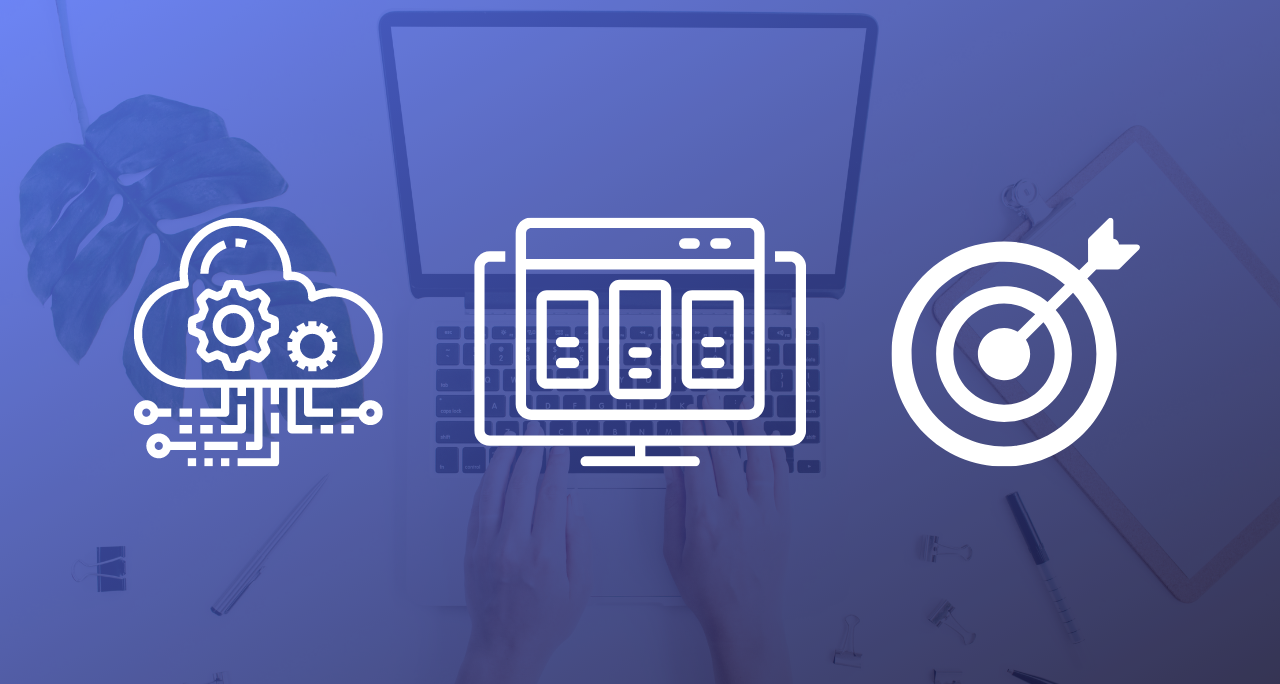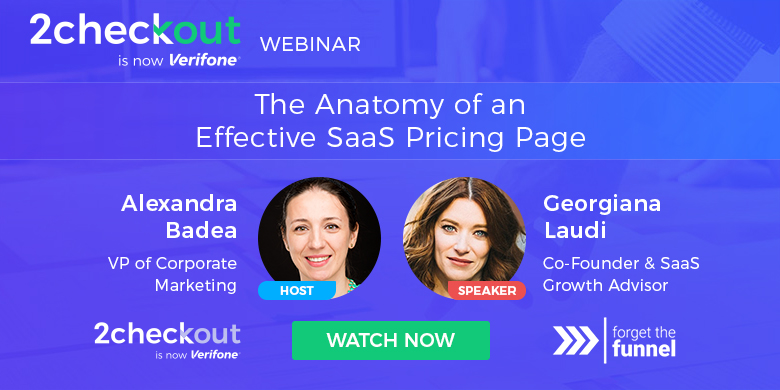Pricing. You’ve narrowed yours down through extensive analysis of your features, value propositions, buyer personas and competitors. But how should you display it to get that conversion? Don’t worry, we have some tips for you.
In our recent webinar had the pleasure to discuss with Georgiana Laudi, Co-Founder & SaaS Growth Advisor at Forget the Funnel, about the anatomy of an effective SaaS pricing page and dive into analyzing specific pricing pages.
Read on for an overview of key tips from Georgiana that will help you create an effective pricing page for you SaaS product, and watch the full webinar for details.
1. Remember the Audience
Most marketers know that their work is all about the audience. Somehow, though, this knowledge evaporates when they start putting together pricing pages.

Too many companies make pricing pages all about the product, features and price points rather than the actual problem the customer wants to solve. Somewhere between the product and pricing pages, companies seem to forget who they’re talking to. So make sure to think about the human you’re talking to rather than simply the price you’re providing. It will make a difference, especially for people who are sent a pricing page by others or go directly to the pricing page (and this happens more often than you might think!).
2. Be Clear on What They’re Signing Up For
Many companies use their pricing pages as a place to offer a time-bound free trial or a freemium version of the product, which can be great way to win customers. However, too many companies offer these enticing free options without enough context. People might not know if they are signing up for a time-based free product trial or a freemium product.
You’ll also want to let people know what happens if they want to cancel the trial. By being clear with customers on these key aspects, you can build trust and increase the likelihood they’ll try what you have to offer.
As a bonus tip, copywriters often get a bit too clever on pricing pages. When it comes to information as important as pricing, you need to be more clear than clever. Always test your page with users to guarantee you haven’t provided too much creativity at the cost of clarity.
3. Provide Social Proof
Social proof is always important, but the point of purchase is the ideal place to deliver it. Unfortunately, too many organizations seem to forget this key element of the purchase process. The pricing page is the ideal time to introduce (or reintroduce) the social proof from happy customers that will reassure prospects and address last-minute concerns in detail so people feel confident in making a purchase from your company.

Note: While an FAQ section is also essential to include, just the FAQ is not enough. Social proof tied to ROI or cost savings is necessary on a pricing page to capture people at the right time and nudge them to make a purchase.
4. Be Consistent with Your CTAs
This is a simple tip, but a common mistake. We see far too many pricing pages use a variety of different calls to action across the page, to the point where prospects may have no idea what they’re supposed to do or what’s going to happen when they click a button.
Whether you want shoppers to try or buy, it’s important to really optimize your CTA (ideally through lots of testing) and keep it consistent and clear (see tip #2!) throughout the pricing page.
5. Keep People on the Page
While it’s important to answer shoppers’ last-minute questions before they make a purchase, far too many pricing pages are filled with links that take people away to a knowledge base.
Spend the time to understand what questions buyers have at the point of purchase, and answer them directly on the page through the FAQ section. Sending users from the pricing page to a knowledge base can mean you lose them forever.
6. Include or Restate Your Value Prop
This gets skipped a lot, but people definitely need a reminder of your product’s value proposition right on the page. As you state the value proposition, think back to tip #1 and remember who you’re addressing and what problem you’re trying to solve.

Additionally, it’s common enough for people to send pricing pages to decision-makers who haven’t explored your website extensively. Clearly restating your value proposition can help make the sale, especially in a hypercompetitive SaaS market that required getting everything right. Think of your pricing page as a “micro website” on its own.
For tips on SaaS pricing strategies, checkout this comprehensive resource on “Pricing for Success in SaaS“.
7. Test, Test and Test Again
We see many pricing pages that are too long or too short. What’s the ideal length of a page? “As long as it needs to be” is the simple but frustrating answer. How do we know how long a page needs to be?
Only by truly understanding your users and their needs can you ensure that your pricing page works for them. One helpful tip for making pages more digestible is to ensure that feature tables are expandable (or collapsible) so buyers can see everything on the page more easily.
No matter how long or short your page is, it’s a mistake to not test and optimize the page continually, so keep pricing page testing on your to-do list. Test, test and test again.
Were these tips helpful as you worked on your pricing page? It’s a labor of love, we know.
Fortunately, you can make the labor a little less intense by watching the full webinar on The Anatomy of an Effective SaaS Pricing Page for additional insights and observations on what makes pricing pages work.






